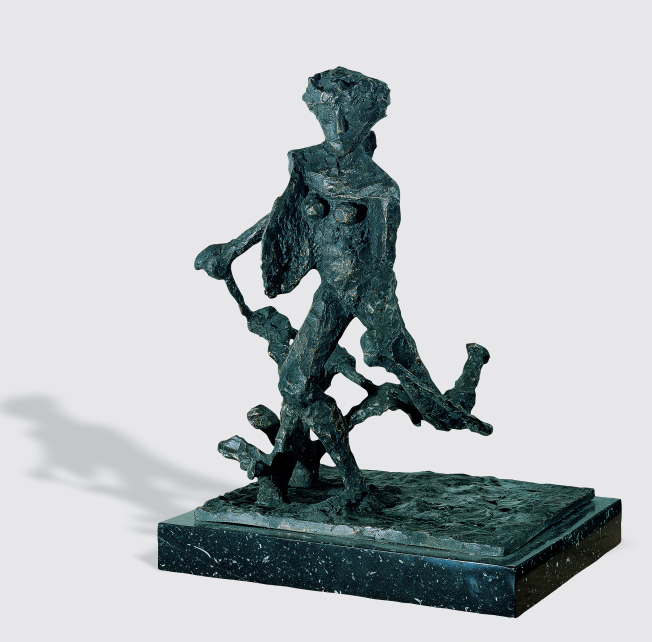Girl with skipping-rope I, 1948


Nikos Hatzikyriakos-Ghika was a painter with a general classical education, literary interests, and a substantive theoretical and aesthetic culture. He expressed himself through an art which was fermented by the major movements of the twentieth century – of which he had experience during the time which he spent in Paris (1922-1928, 1930-1934) – and his profound knowledge of and unfailing interest in ancient Mediterranean civilisations, the Far East, Byzantine mosaics, and the Greek folk tradition. All these elements – what he had experienced and known and what was concealed within him – were transformed into a unique oeuvre which bears the mark of a strong personality as well as of his Greekness. He is regarded as the principal representative of Cubism in Greece, but of a Cubism which is imbued with the transparency and magic of the Mediterranean light, which leads to the poetical apotheosis of beauty through a search for harmonious relations. Thus he is very close to post-Cubist quests, with the de-construction of form into patterns. At the same time, however, he abstains from the complete dissolution of form, as he softens the cold geometrical analysis of the planes with curves, thus bringing out the emotional element in his painting. The colour, transubstantiated by the strong Mediterranean light, a definitive feature of his painting, with its limpidity, power, and purity, spiritualises the content, pointing to its essence. Even in his most austere compositions, the shining of the searing colours show an art which is human, a form of expression of a Mediterranean, emotional character, which rejects any cerebral frigidity.
Hatzikyriakos-Ghikas was a complex creative artist who concerned himself not only with painting, in which he made his name, but also with stage set design, engraving, and sculpture. His technique took on many influences from European movements, particularly from Cubism. Nevertheless, at the same time it possesses "the most authentic sensitivity towards tradition". In his work, features from ancient and Byzantine art, the folk tradition, and his passion for nature in Greece and the special light in which it is imbued can be traced. His devotion to his native land is obvious in the subject-matter which he chose, whether this was familiar landscapes of Athens and the islands, or ancient Greek art. Hatzikyriakos-Ghikas began to involve himself in sculpture in the period 1933-1934. After 1948, he drew the subjects for his sculptures almost exclusively from Greek mythology, starting on a series of four reliefs which show the repellent head of Medusa. He also produced a series of mythological couples on relief medallions, such as Jason and Medea, Perseus and Andromeda, and Theseus and Ariadne. In his three-dimensional works, Homer was repeatedly a source of inspiration. More specifically, the scene which he reproduces is the meeting of Odysseus with Nausicaa on the island of the Phaeacians.

